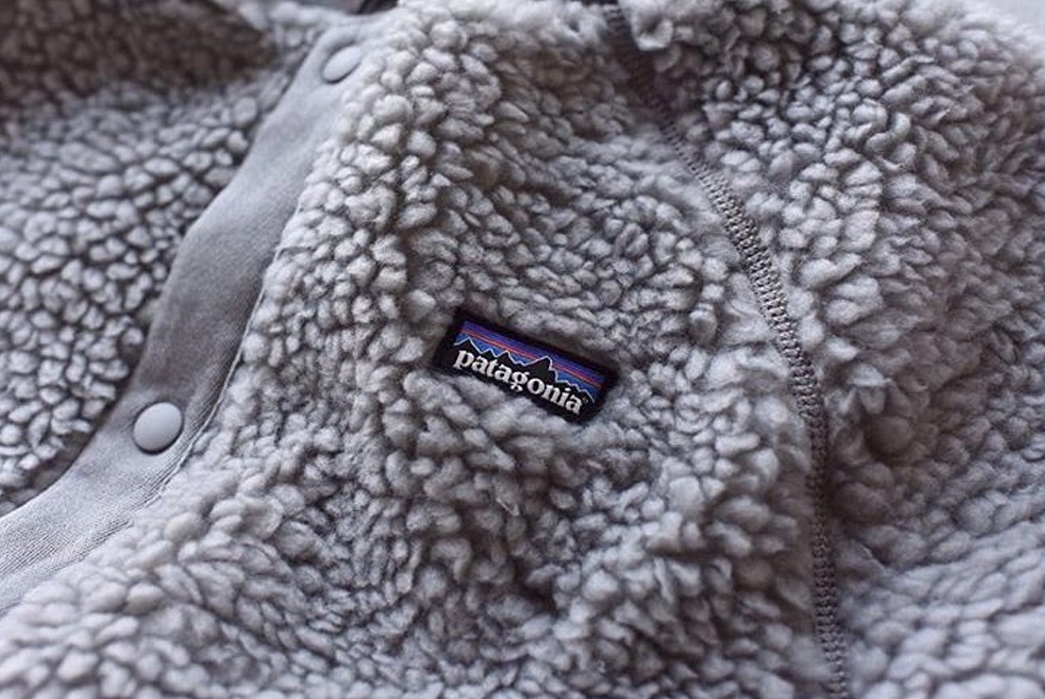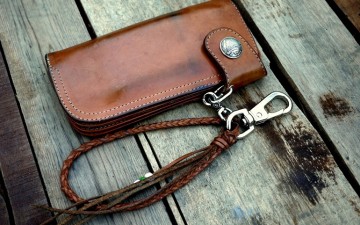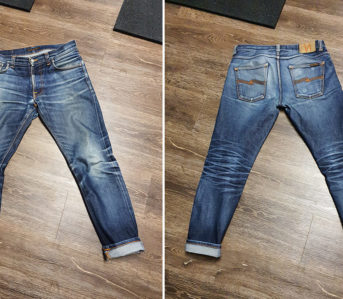The many manifestations of fleece have seemingly flooded the clothing industry in recent years. Undoubtedly linked to the rise in popularity of outdoor and technical fashion led by brands like Patagonia, The North Face — and more recently Salamon, And Wander, Snow Peak, and Arcteryx — we’re seemingly choking on fluffy stuff, and we’re not really complaining.
If there is a cold-weather fabric hierarchy, fleece is the ruling class. But there’s a bunch of different fleece types out there, each with different applications and homes in the sartorial world, so we thought we’d take a closer look at the different breeds of fleece, and where you might typically find them.
What is fleece?
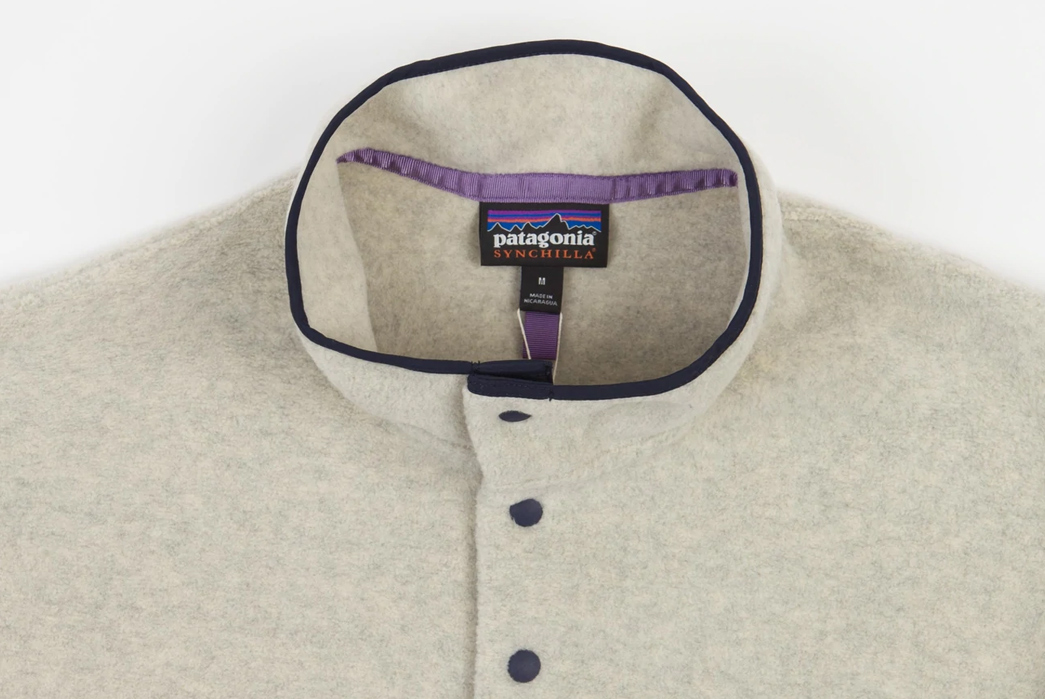
Patagonia Synchilla via Flatspot
The word “fleece” historically defined the woolly covering of a sheep or goat, but the term has broadened to essentially define any soft, warming fabric that mimics those aforementioned animal coats. You may hear the term ‘wool fleece’, but this term really just refers to unprocessed wool.
Fleece is a synthetic warming fabric, typically made from acrylic or a specific type of polyester called polyethylene terephthalate. It can be also be made of acrylic, but all fleece is created by weaving very fine fibers into a light fabric, which is then brushed into that iconic soft, fuzzy cloth that we know and love.
You can read a brief history of Fleece here.
How is fleece made?
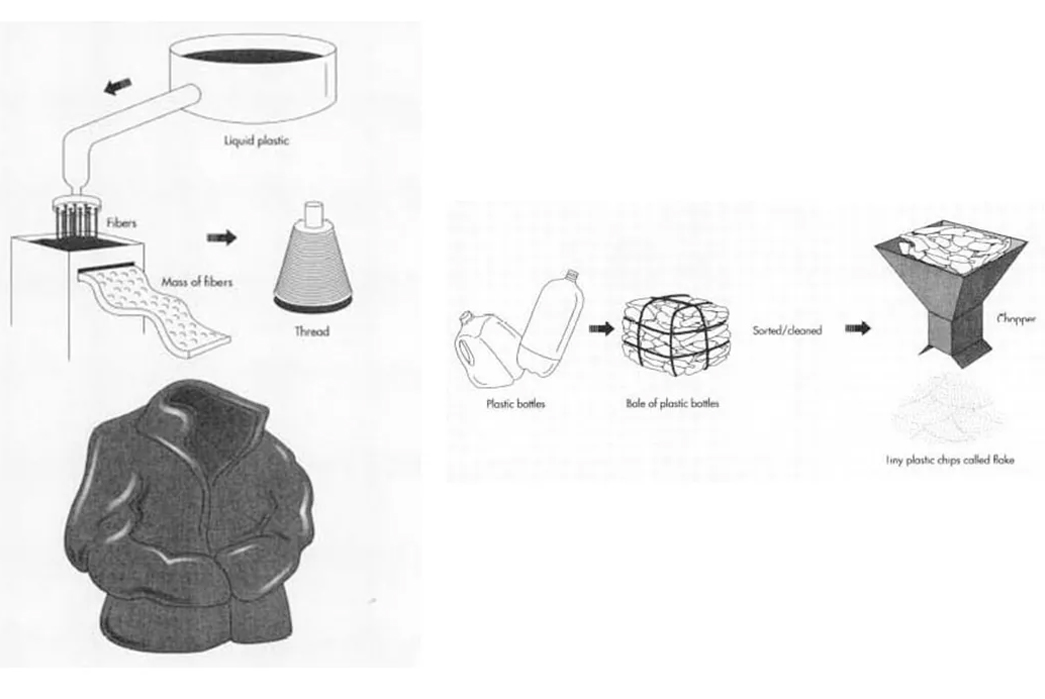
Basic diagrams of polyester manufacture and recycling plastic bottles
In order to create polyester fleece, polyester fibers must be made first. Petroleum derivatives are heated until they form a thick gloop, which, when set, is spun to form yarns. Being a fellow petroleum product, acrylic fleece is made in the same way, but polyester and acrylic are often blended to make fleece. There isn’t too much to say about cotton fleece since it’s basically just the name assigned when cotton fibers are woven together and brushed to create a fleece-like texture. Just think of the underside of a sweatshirt.
Non-recycled fleece is made from non-renewable petroleum derivatives which I will leave up to you as to whether that sounds good for the environment. And while it can be partially made from recycled plastics, this in itself requires production of non-renewable fossil fuels. Just remember there is enough polar fleece in the world right now to scratch your itch so before you go brand new, check out your local thrift shop for jackets, pullovers, pants, hats, and gloves!
Properties of Fleece Fabrics
For many, fleece is a cold-weather staple as it keeps you warm due to its dense weave and fuzzy texture. Air pockets can sit between the piles on the surface of fleece, meaning the material can retain more warmth. Synthetic fleece is more comfortable on the skin than many wools, and its synthetic nature allows moisture to evaporate rather than absorb it. Furthermore, by not absorbing as much moisture as, say, a cotton cloth, fleece remains more breathable.
In other words, fleece is a bit of miracle fabric. It has very few flaws, the main one being that it is not biodegradable. This leads us onto sustainability.
Is fleece sustainable? The answer is yes, and no. The good part is that increasingly, fleece is made from recycled polyester (mostly using plastic bottles or old textiles), which is, of course, better than producing more virgin fibers. In terms of the carbon footprint of their manufacture, fleece and wool average out to around the same, however since the former has a better record of durability, it can be argued that this is the more sustainable choice.
The problem is that even when fleece is spun from recycled textiles, polyester still releases microfibers into the water when its washed, and on top of that, the fabric doesn’t biodegrade anywhere near as quickly as natural variations do. According to a study by the University of California (and funded by our friends at Patagonia), the average synthetic jacket drops around 1.7 grams of microfibers into the washing machine, which makes its way to the water treatment plant and eventually out into the ocean. To help put a stop to this, you could try using a Guppy Friend, a washing bag that aims to minimize fiber shedding and microplastic pollution, but many argue that the solution ought to come from textile manufacturers.
The Types of Fleece
Polar Fleece
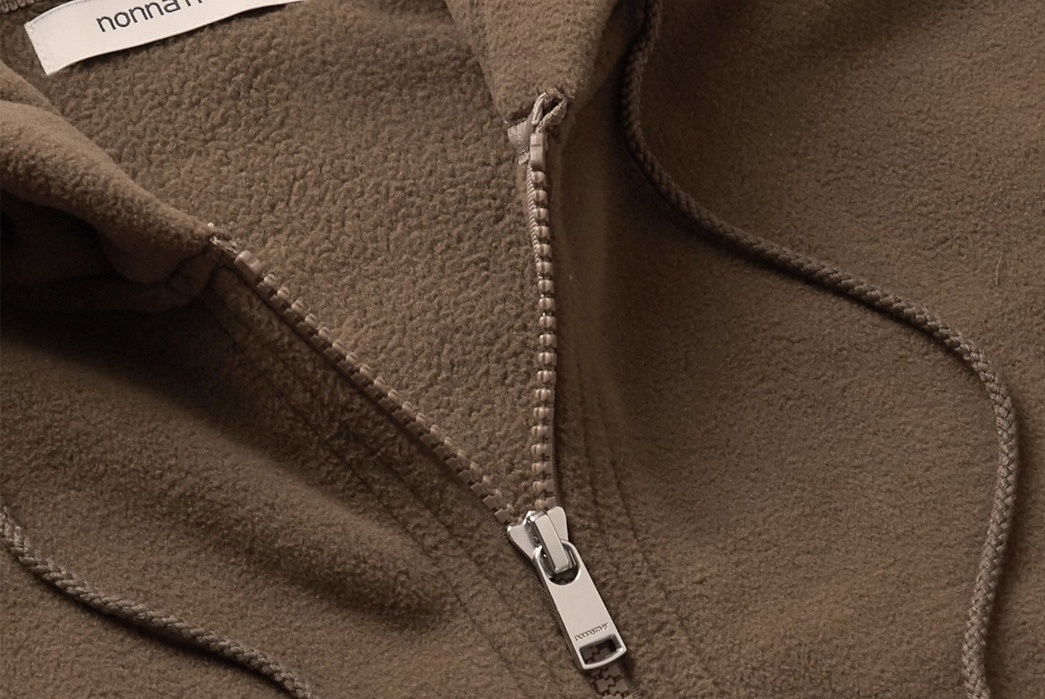
Image via Clothbase
Polar Fleece is the name given to fleece with a double sided pile. It’s the fleece that you see on countless amounts of outdoors wear, blankets, and linings of garments – perhaps the most common and ubiquitous form of fleece. It’s made from polyester and sets out to mimic the feel of fine wool. This is done by brushing the fabric to give it more softness, and fuzz.
Polar fleece originated in Massachusetts in the 70s when Malden Mills, now Polartec LLC, realized the potential of using man-made fibers to make imitation shearling. Malden Mills worked with Patagonia to create a synthetic alternative to wool chinchilla, Synchilla. These new pilled fabrics were the newest, lightest, and strongest pile fabric on the scene and impressed Malden Mills CEO so much that he declined to patent it, which allowed the material to be produced cheaply and widely, ultimately leading to its overnight ubiquity.
After it was introduced by Polartec, practically all fleece materials — regardless of their manufacturer or even if it only had one-sided pile — began to be referred to as Polar Fleece. But, to be clear, polar fleece has a 2 sided pile as you can see in the image above.
Microfleece
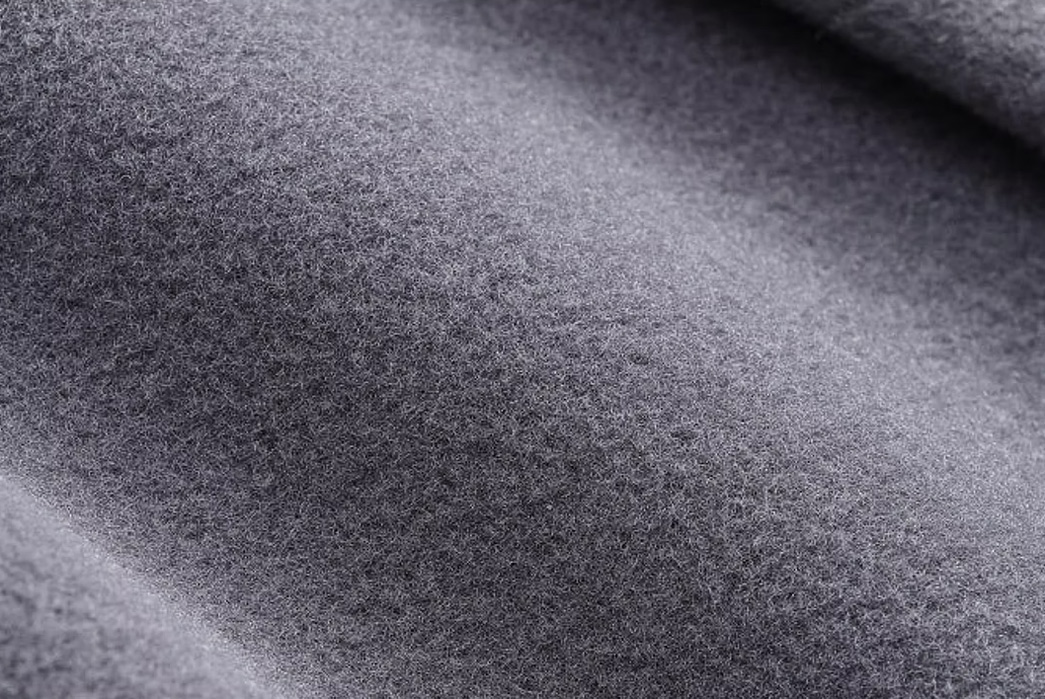
Polartec Microfleece via Polartec
Microfleece is a term to describe thin, double-sided, lightweight fleece – essentially, a much finer and micro version of polar fleece. Known for its super-soft, comfortable texture, breathability, and flexibility, it doesn’t offer as much insulation as other fleeces, but it packs a formidable punch and keeps a lower profile making it ideal for layering, especially for exercise. For those keeping track, typically any fleece up to 200 gsm or about 6oz. is considered a microfleece.
Boa/ Sherpa
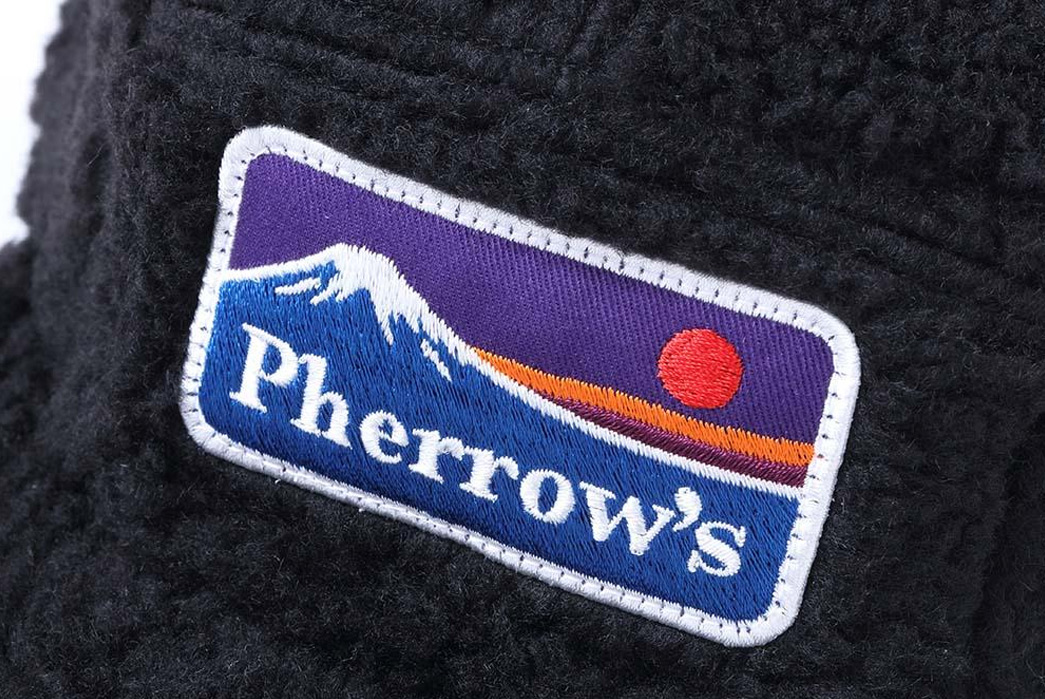
Image via Clutch Cafe
Also called faux-sheepskin or faux-shearling, sherpa is a type of synthetic fleece made from 100% polyester that mimics natural wool fleece. It is known for its smooth knit side and textured ‘this looks like sheep fleece’ side. It is super light, extremely plush, and retains its pilly gloriousness post-wash. Apart from being a great technical fabric, it’s super versatile in fashion which is probably why it’s blown up in tons of fashion circles from sorority girls and indie rockers to gorp fans and vintage heads.
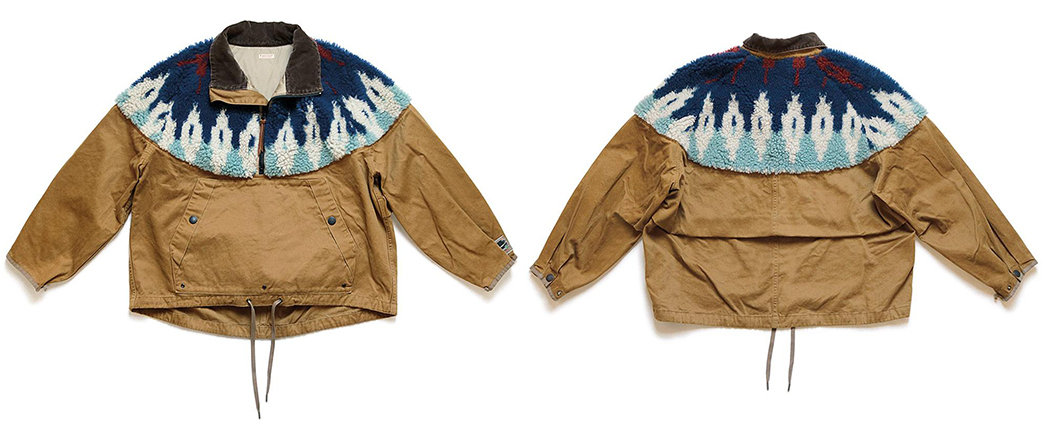
Kapital Chino x BOA Fleece Nordic Anorak, $645 from Hatchet Outdoor Supply
Wool Fleece
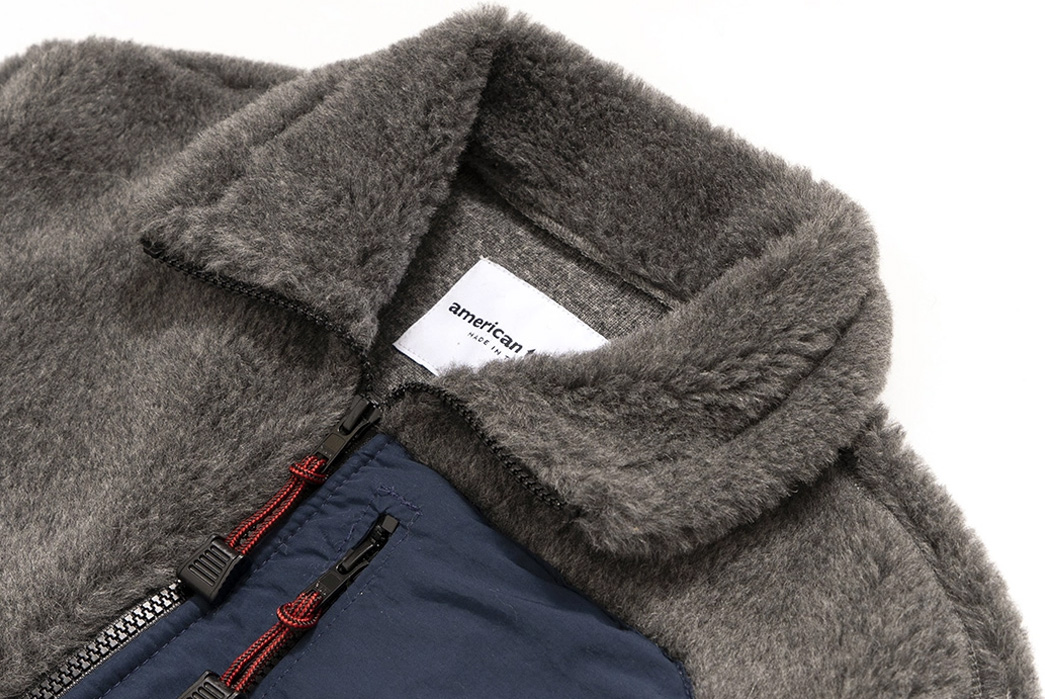
Wool fleece refers to the fluffy coat of sheep and other mammals. Wool fleece is collected through the process of shearing the mammal to acquire its coat which is then processed into cloth. It’s been used for thousands of years all over the world and is known for its warmth without the weight and water repellent qualities.
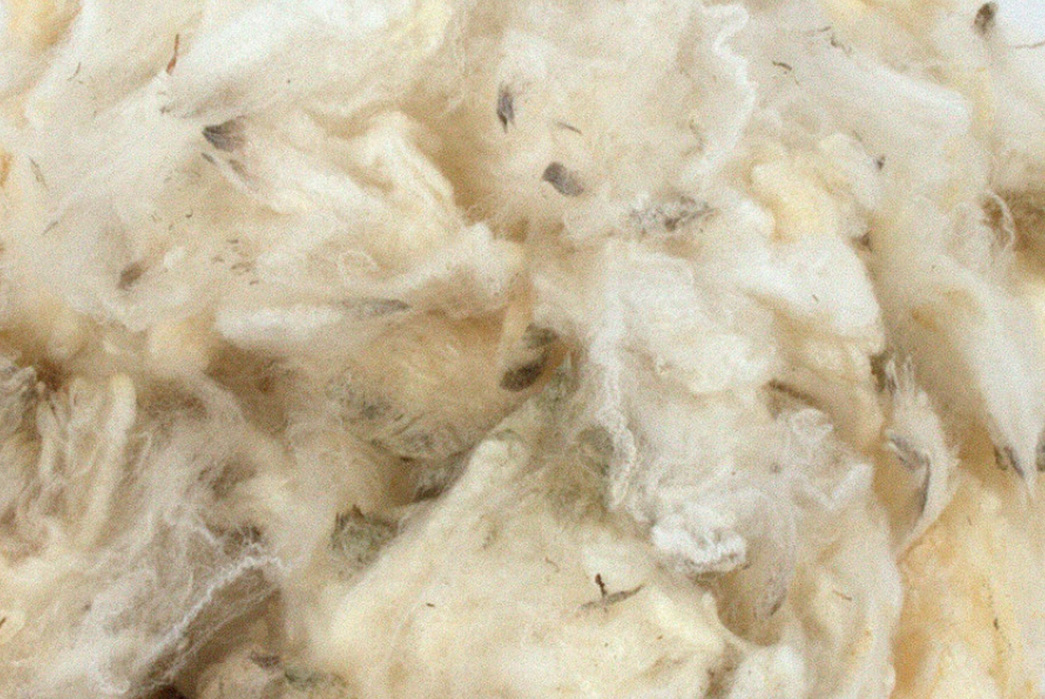
Image Via Romney Marsh Wools
Shearing has become a contentious topic amongst animal rights activists due to the poor treatment of sheep during its acquisition. The logic is, the workers only care about the fur and not the animal it’s attached to. The opposing viewpoint seems to be that, although not the best, sheep do not shed their wool fleece on their on which can lead to lack of mobility, overheating, and even death. So basically, had humans never interfered in the first place and sheep could still shed on their own, we should leave them be, but since that’s not how things shook out and sheep are now dependent on us to shear them, you just need to be conscious of where the wool for your knits came from.
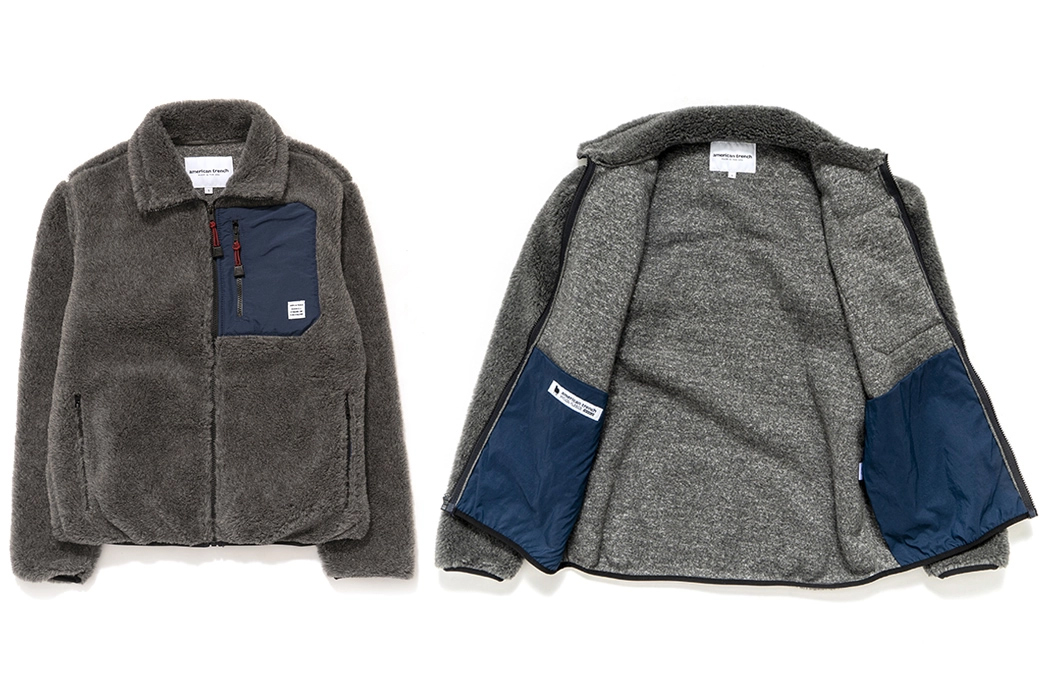
American Trench Wool Fleece Jacket, available for $328 at American Trench
Slub Fleece
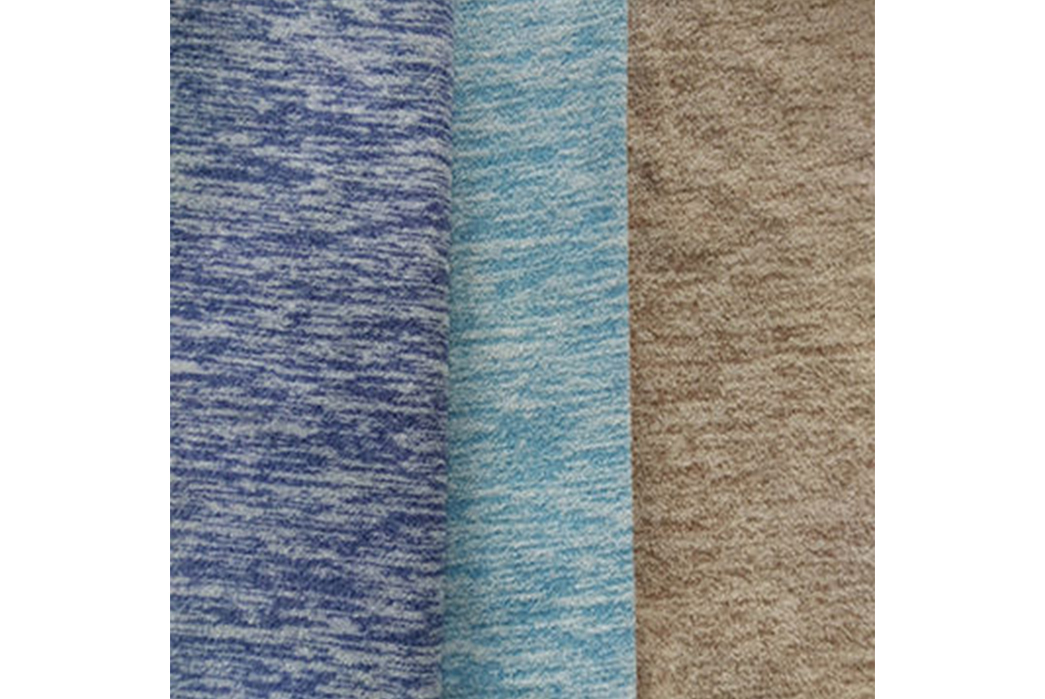
Image via Global Source
It is made from two different sizes of twisted yarn, resulting in a textured fabric and an almost heather-looking blended appearance. It is often used for athletic sweatshirts and jackets. Slub Fleece is often made from a blend of cotton and polyester,
Sweatshirt Fleece
The most common type of cotton fleece is sweatshirt fleece. The face of sweatshirt fleece looks like a standard cotton jersey, but the inside has been brushed to give the fabric a soft fleece-like texture that is soft on the skin.
Terry Fleece
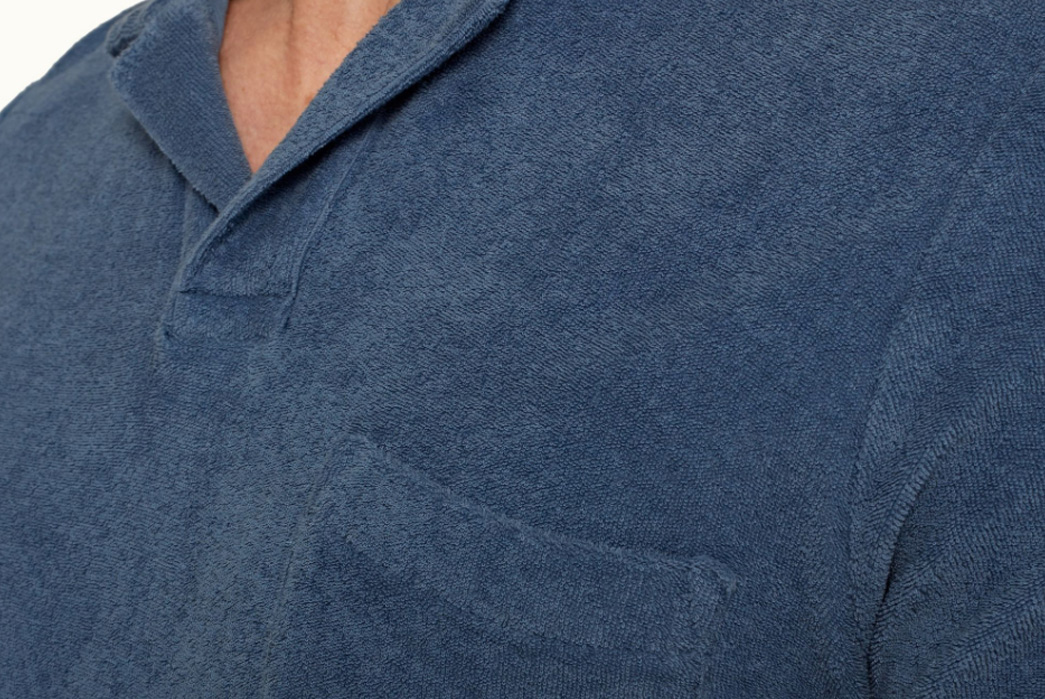
Terry Fleece via Orlebar Brown
Terry fleece is an interesting one because of its versatility. Whether drying off after a dip in the pool, lounging around in the hotel, or just sporting your grandad’s old beach romper shirt, chances are you’re rocking with Terry.
Known for its water absorption and luxurious feel, terry fleece was once a common summertime staple that has now mostly been relegated to the bathroom. The fabric is woven on a loom with 2 warp threads, one of which is intentionally loose so when pulled through the weft creates that iconic piling on both faces of the fabric. Terrycloth is not to be confused with French Terry which is a cotton jersey fabric, the differences of which are explained in our article, Textile Tales: Terrycloth.
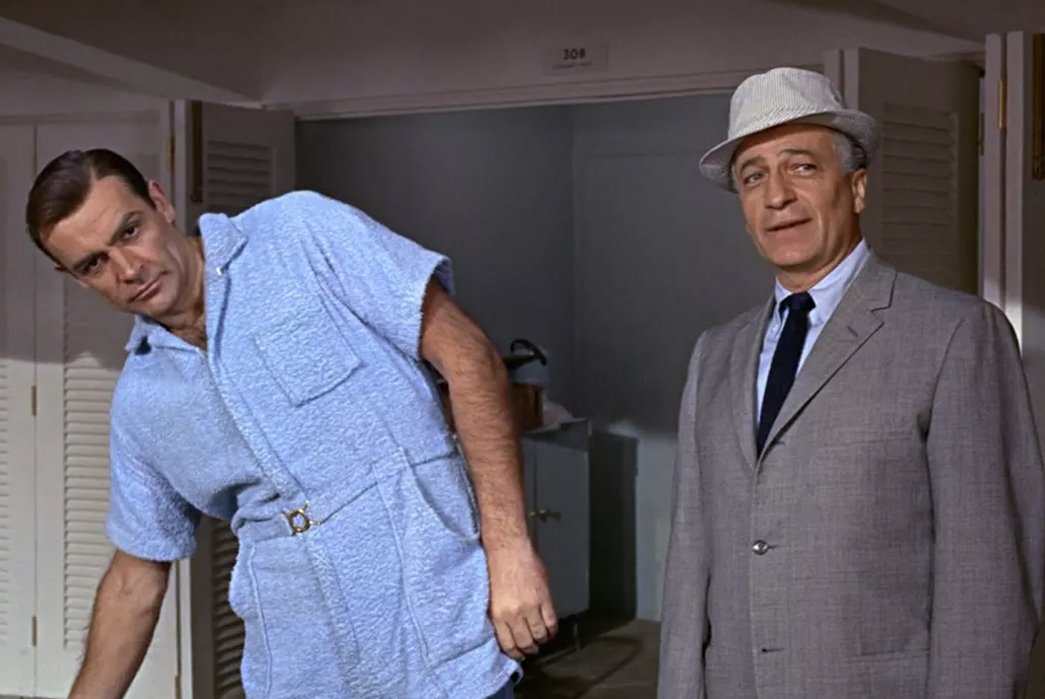
Sean Connery’s famous Terrycloth playsuit in “Goldfinger.” Image via Bondsuits.

